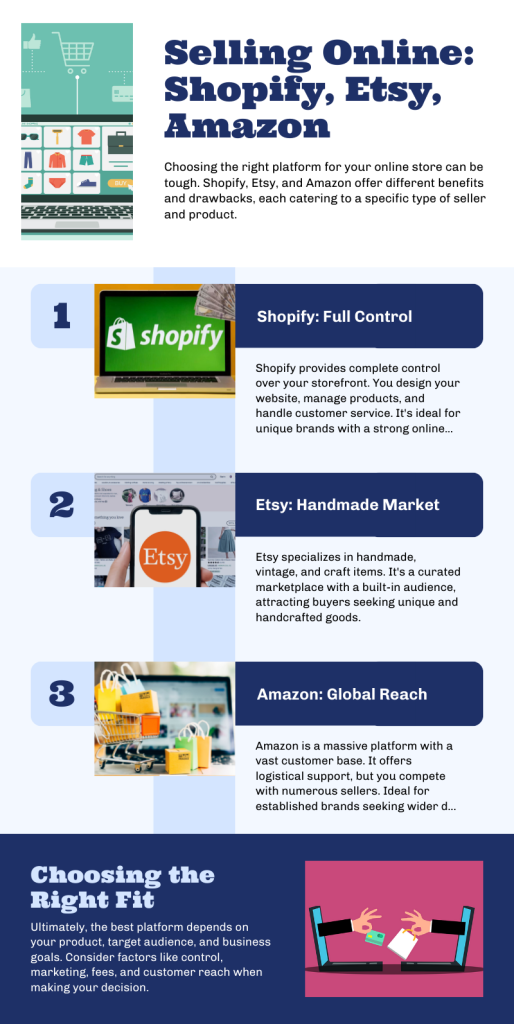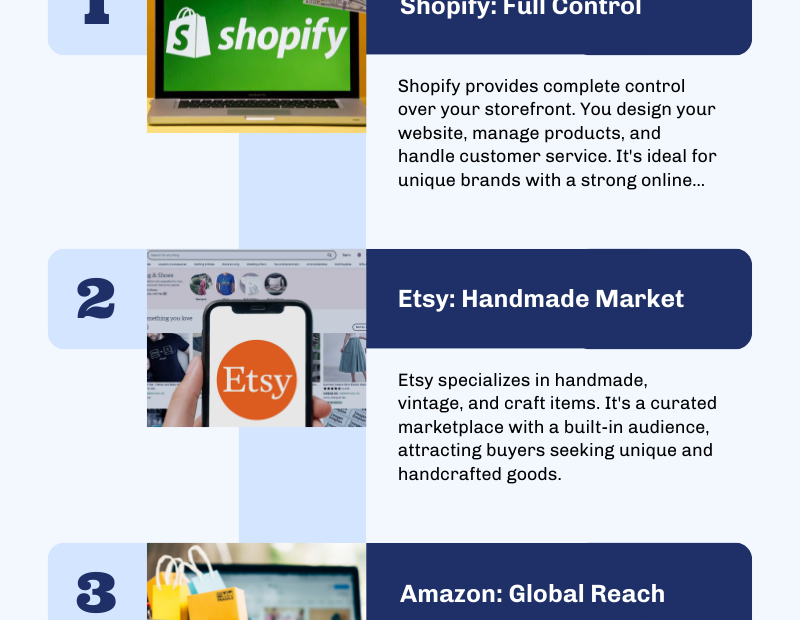
Making money with Shopify can be done through various methods, each with its own set of advantages and challenges. Here are some effective ways to generate income using Shopify:
1. Dropshipping
Pros:
- Low Startup Costs: No need to purchase inventory upfront.
- Low Risk: Only pay for products when they are sold.
- Flexibility: Easy to switch products and niches.
Cons:
- Lower Profit Margins: Due to the cost of goods sold and shipping from suppliers.
- Supplier Reliability: Dependence on suppliers for quality and delivery times.
- Intense Competition: Many dropshipping stores often compete with similar products.
Profitability: Dropshipping can be profitable, especially if you find a niche market with high demand and low competition. Success often depends on effective marketing and building a strong brand.
2. Selling Your Own Products
Pros:
- Higher Profit Margins: Control over pricing and costs.
- Brand Control: Full control over product quality and customer experience.
- Unique Offerings: Ability to offer unique or custom products.
Cons:
- Higher Startup Costs: Need to invest in inventory upfront.
- Inventory Management: Requires managing stock levels and storage.
- Fulfillment Responsibilities: Handling shipping and returns.
Profitability: Selling your own products can be more profitable in the long run if you have a unique product and strong brand. This approach allows for greater control over profit margins and customer relationships.
Effective Ways to Make Money with Shopify
- Niche Market Focus:
- Identify and target a specific niche with high demand and low competition.
- Tailor your products, marketing, and content to appeal to this niche.
- High-Quality Product Listings:
- Use high-quality images and detailed product descriptions.
- Highlight the benefits and unique features of your products.
- Effective Marketing Strategies:
- Utilize social media marketing, email marketing, and content marketing to drive traffic to your store.
- Leverage paid advertising on platforms like Facebook, Instagram, and Google Ads.
- SEO Optimization:
- Optimize your Shopify store for search engines to drive organic traffic.
- Use relevant keywords in product titles, descriptions, and blog posts.
- Customer Engagement:
- Provide excellent customer service to build trust and loyalty.
- Use email campaigns to keep customers informed about new products and promotions.
- Upselling and Cross-Selling:
- Offer related products or upgrades to increase the average order value.
- Use product bundles and discounts to encourage larger purchases.
- Subscription Services:
- Offer subscription boxes or recurring billing options for consumable products.
- This can create a steady stream of revenue and improve customer retention.
- Leverage Shopify Apps:
- Use Shopify apps to enhance your store’s functionality and improve customer experience.
- Apps for inventory management, customer reviews, and email marketing can be particularly useful.
Conclusion
Both dropshipping and selling your own products on Shopify can be profitable, but they cater to different business models and goals. Dropshipping is ideal for those looking to minimize initial investment and test different products quickly. On the other hand, selling your own products can yield higher margins and greater brand control but requires more upfront investment and management.
Ultimately, the most suitable method depends on your resources, business goals, and willingness to manage various aspects of the business. Combining both methods can also be an effective strategy to diversify revenue streams and mitigate risks.
